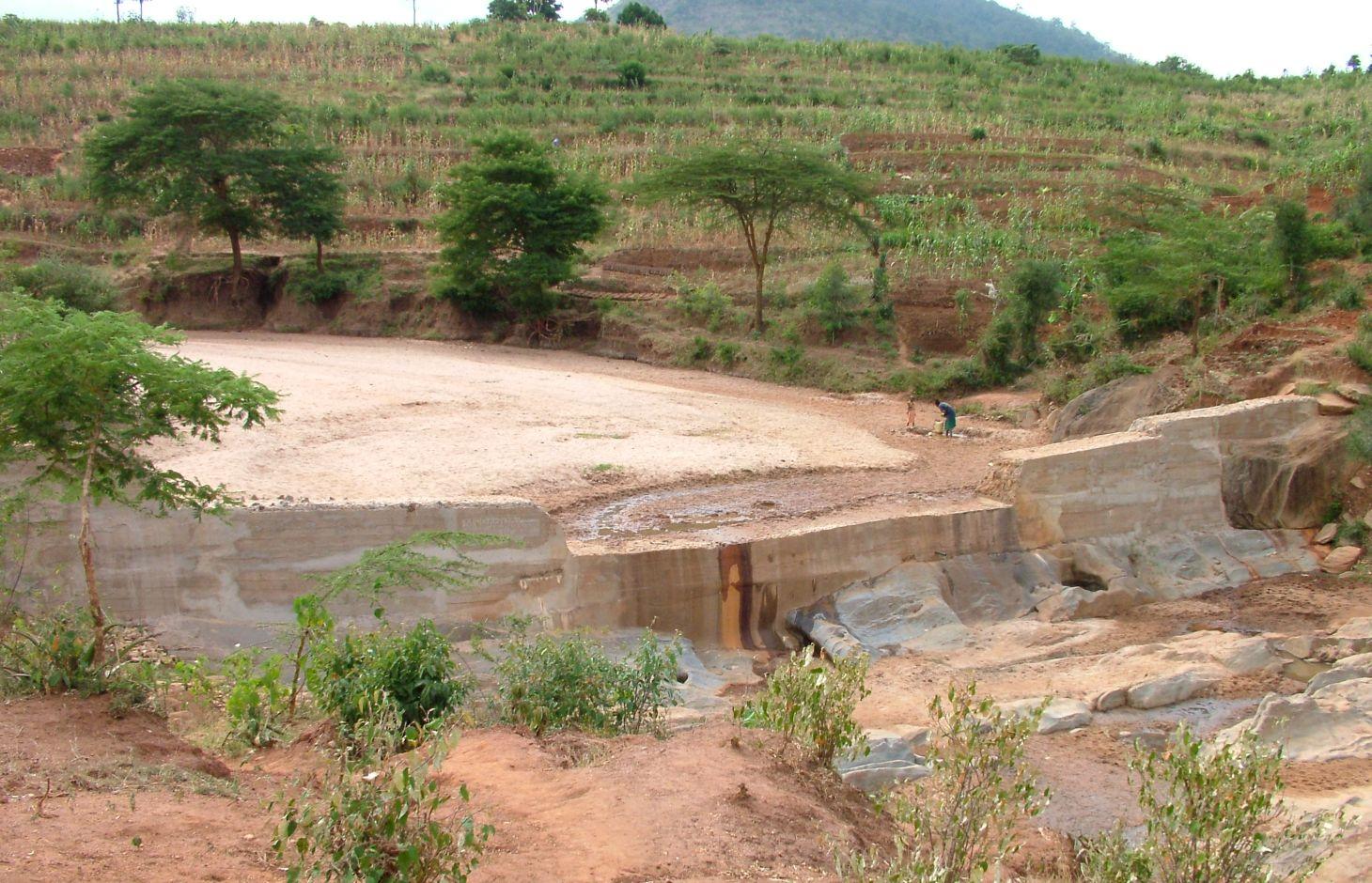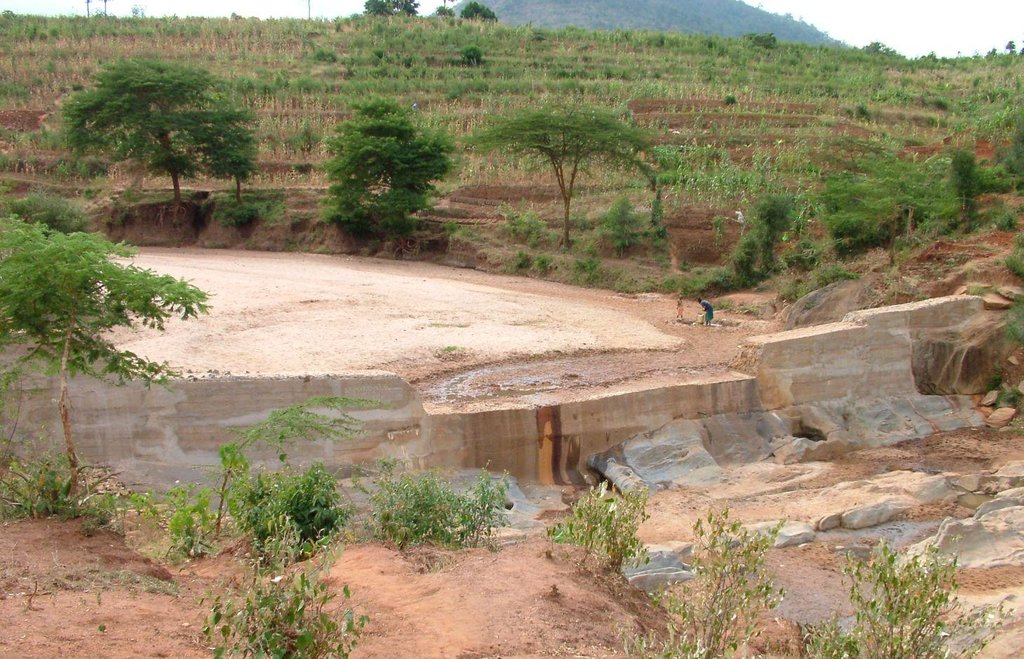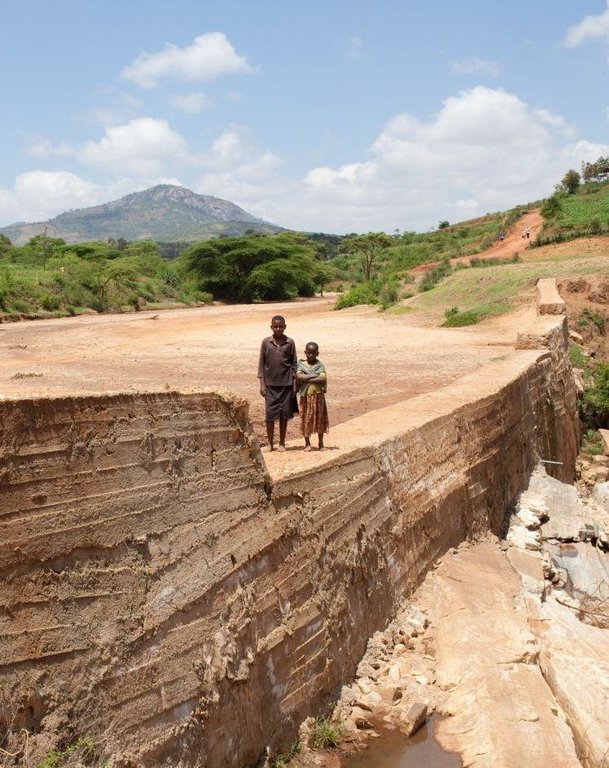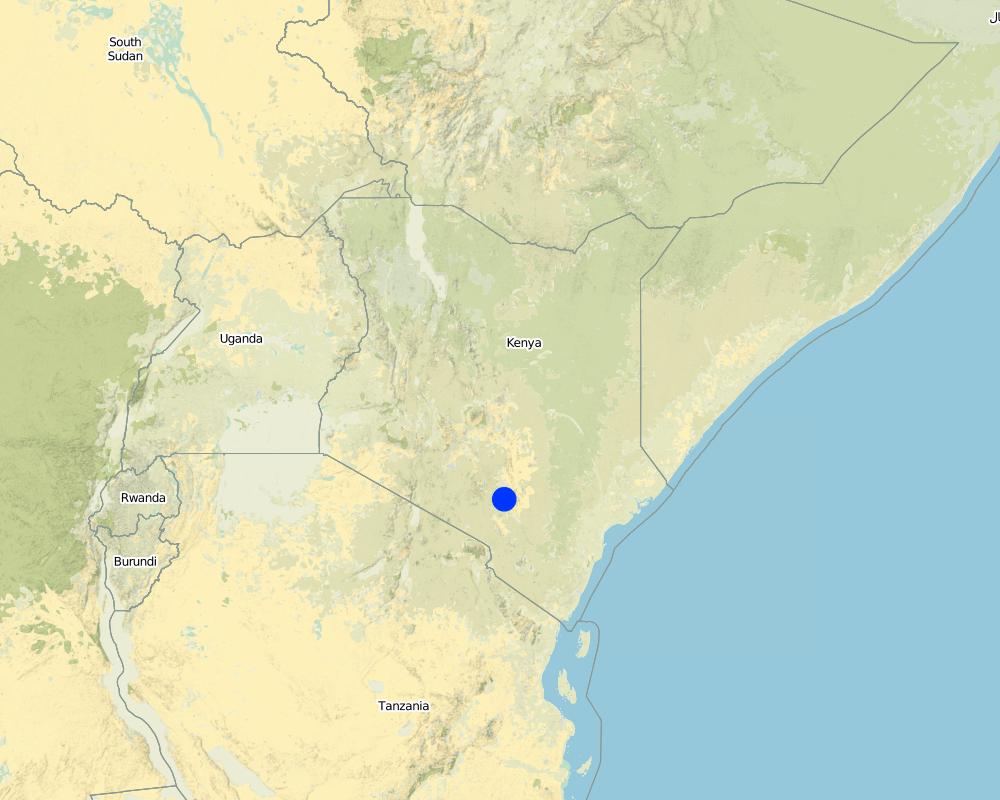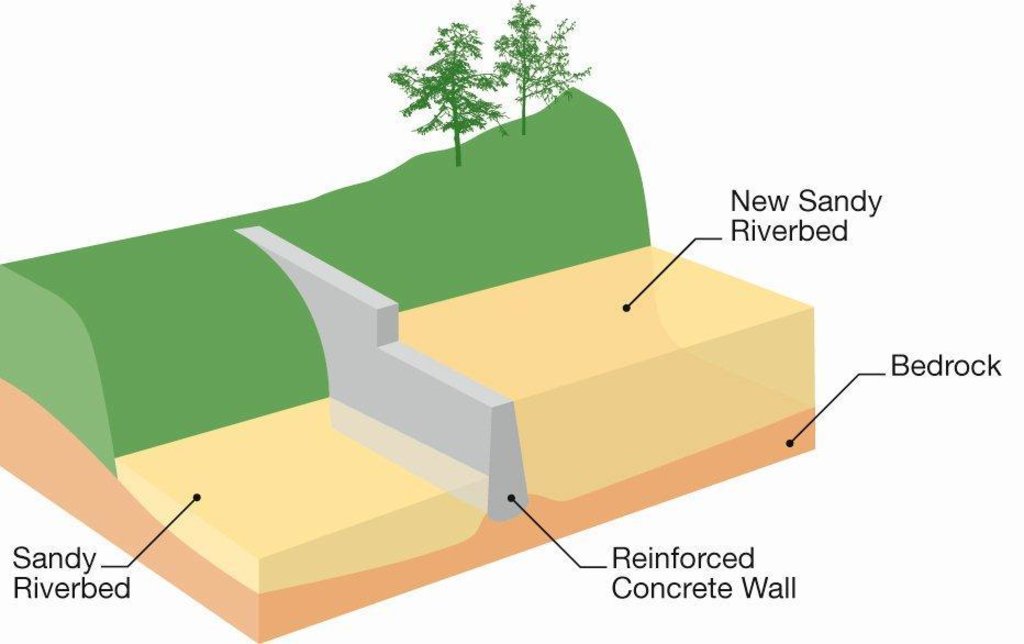Sand dams [ប្រទេសកេនយ៉ា]
- ការបង្កើត៖
- បច្ចុប្បន្នភាព
- អ្នកចងក្រង៖ Ian Neal
- អ្នកកែសម្រួល៖ –
- អ្នកត្រួតពិនិត្យ David Streiff
Sand storage dams, Groundwater dams
technologies_1537 - ប្រទេសកេនយ៉ា
ពិនិត្យមើលគ្រប់ផ្នែក
ពង្រីកមើលទាំងអស់ បង្រួមទាំងអស់1. ព័ត៌មានទូទៅ
1.2 ព័ត៌មានលម្អិតពីបុគ្គលសំខាន់ៗ និងស្ថាប័នដែលចូលរួមក្នុងការវាយតម្លៃ និងចងក្រងឯកសារនៃបច្ចេកទេស
អ្នកជំនាញឯកទេស SLM:
អ្នកជំនាញឯកទេស SLM:
Musila Andrew
musila.asdf@gmail.com
Africa Sand Dam Foundation
P.O Box 125 - 90128, Mtito Andei, Kenya,
ប្រទេសកេនយ៉ា
ឈ្មោះអង្គភាពមួយ (ច្រើន) ដែលបានចងក្រងឯកសារ/ វាយតម្លៃបច្ចេកទេស (បើទាក់ទង)
Africa Sand Dam Foundation (ASDF) - ប្រទេសកេនយ៉ាឈ្មោះអង្គភាពមួយ (ច្រើន) ដែលបានចងក្រងឯកសារ/ វាយតម្លៃបច្ចេកទេស (បើទាក់ទង)
Excellent Development Ltd. (Excellent Development Ltd.) - ចក្រភពអង់គ្លេស1.3 លក្ខខណ្ឌទាក់ទងទៅនឹងការប្រើប្រាស់ទិន្នន័យដែលបានចងក្រងតាមរយៈ វ៉ូខេត
តើពេលណាដែលទិន្នន័យបានចងក្រង (នៅទីវាល)?
27/03/2012
អ្នកចងក្រង និង(បុគ្គលសំខាន់ៗ)យល់ព្រមទទួលយកនូវលក្ខខណ្ឌនានាទាក់ទងទៅនឹងការប្រើប្រាស់ទិន្នន័យដែលបានចងក្រងតាមរយៈវ៉ូខេត:
បាទ/ចា៎
2. ការពណ៌នាពីបច្ចេកទេស SLM
2.1 ការពណ៌នាដោយសង្ខេបពីបច្ចេកទេស
និយមន័យបច្ចេកទេស:
A sand dam is a stone masonry barrier across a seasonal sandy riverbed that traps rainwater and sand flowing down the catchment.
2.2 ការពណ៌នាលម្អិតពីបច្ចេកទេស
ការពណ៌នា:
A sand dam is typically 1 - 5 metres high and 10-50 metres across. When it rains the dam captures soil laden water behind it – the sand in the water sinks to the bottom, whilst the silt remains suspended in the water. Eventually the dams fill with sand - sometimes after only one rainfall or over 1 – 3 seasons. 25 to 40% of the volume of the sand held is actually water. A mature sand dam can store millions of litres of water – refilling after each rainfall providing a year round supply to over 1,000 people.
Purpose of the Technology: Sand dams are a simple, low cost and low maintenance, replicable rainwater harvesting technology. They provide a clean, local water supply for domestic and farming use and are suited to arid and semi-arid areas of the world. It is a solution that is scaleable and has a broader application for use as a rural and game park road crossing to replace less effective culvert bridges.
Establishment / maintenance activities and inputs: Sand dams are the lowest cost form of rainwater harvesting and its robust nature and very low operational and maintenance costs make it particularly suited to remote and poorly served regions. A typical dam using 500 bags of cement would approx be 40 metres in length with a spillway 2 metres above the bedrock. The dam is constructed using stone masonry placed in timber formwork. Such a dam costs approximately USD 11,800 (in 2012 prices). This consists of materials (cement, steel reinforcement, timber, transport) and dam permit USD 8,800 (75%), project management including technical support from skilled local artisans and dam designers USD 2150 (18%) and finance and administration costs of implementing organisation USD 850 (7%). Local people freely contribute their labour to collect rock, sand and water, terrace and protect the immediate catchment and construct the dam. If this contribution was costed and included the cost of the dam would almost double. The maintenance and repair costs of the dam provided it has been well designed and constructed is negligible. Local users are responsible for the management and repair of the dam and its abstraction system. Where a hand pump is fitted, local users fund the repair and replacement of the pump as required. The purchase and repair of petrol powered water pumps which some groups use to irrigate adjacent land is the responsibility of the members of the local group.
Natural / human environment: Because the water is stored within the sand, evaporation losses are very low, the sand filters the water and water-vector diseases such as malaria are controlled. Sand dams provide significant environmental benefits such as aquifer recharge, increased downstream flows in the dry-season, rejuvenation of river ecologies and moderation of floods. As such, it contributes to ecosystem services and climate change adaption.
2.3 រូបភាពនៃបច្ចេកទេស
2.5 ប្រទេស/តំបន់/ទីតាំងកន្លែង ដែលបច្ចេកទេសត្រូវបានអនុវត្ត និងបានគ្រប់ដណ្តប់ដោយការវាយតម្លៃនេះ
ប្រទេស:
ប្រទេសកេនយ៉ា
តំបន់/រដ្ឋ/ខេត្ត:
Machakos, Kitui and Makueni Counties
បញ្ជាក់បន្ថែមពីលក្ខណៈនៃទីតាំង:
Eastern Province, Kenya
មតិយោបល់:
Boundary points of the Technology area: An approx. triangular area bordered by Machakos, Kitui and Mitio Andei.
Map
×2.6 កាលបរិច្ឆេទនៃការអនុវត្ត
ប្រសិនបើមិនច្បាស់ឆ្នាំ សូមបញ្ជាក់កាលបរិច្ឆេទដែលប្រហាក់ប្រហែល:
- 10-50 ឆ្នាំ
2.7 ការណែនាំពីបច្ចេកទេស
សូមបញ្ជាក់តើបច្ចេកទេសត្រូវបានណែនាំឱ្យអនុវត្តដោយរបៀបណា:
- តាមរយៈគម្រោង / អន្តរាគមន៍ពីខាងក្រៅ
មតិយោបល់ (ប្រភេទនៃគម្រោង ។ល។):
Sand dams are an ancient technology. Examples are found across the world's drylands although the greatest concentration is found in Kenya. They were introduced to Kenya in the 1950s from India. Dams were pioneered in Machakos and Makueni counties of Kenya by Joshua Mukusya, a visionary farmer and development worker, in 1978. He worked with a range of agencies to develop and implement the technology. In 1990, staff trained by Joshua set up SASOL to pioneer sand dams in the neighbouring county of Kitui. In 2002, Joshua teamed up with Simon Maddrell, Excellent Development's director, to establish Excellent Development Kenya, now Utooni Development Organisation (UDO) to scale up the work. Sadly, in 2011, Joshua passed away. In 2010, Excellent Development formed a strategic partnership with the Kenyan NGO, Africa Sand Dam Foundation (ASDF), to support the wider uptake beyond Kenya. Today, ASDF, SASOL and UDO are the three NGOs with the most experience of building successful sand dams, approx. 130 dams / year, although many other NGOs have adopted the technology.
3. ចំណាត់ថ្នាក់នៃបច្ចេកទេស SLM
3.1 គោលបំណងចម្បង (១ ឬច្រើន) នៃបច្ចេកទេសនេះ
- access to water
3.2 ប្រភេទដីប្រើប្រាស់មួយប្រភេទ (ច្រើនប្រភេទ) ដែលបានអនុវត្តបច្ចេកទេស
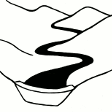
ផ្លូវទឹក ផ្ទៃទឹក ដីសើម
- ខ្សែទឹក ផ្លូវទឹក
- ស្រះ ទំនប់
មតិយោបល់:
Major land use problems (compiler’s opinion): Drylands are characterised by intense and variable rainfall and a lack of vegetative cover. As a result, drylands are prone to droughts, flooding and soil erosion which result in endemic water and food scarcity.
Major land use problems (land users’ perception): “We used to fetch water from Londokwe; we could spend a night to collect water. One way was 3 to 10 km and up to 12 hours or more to go and come back [because of the time taken to queue]. If we could not make it to the river, we would send our children to fetch water. When they went fetching water that would mean they did not go to school. At times people would fight over fetching water from other people’s scoop holes. Scoop holes would be guarded in turns. The gourds [water containers] would be damaged and the water poured down. Children would not go to school [as they needed to] take care of the young ones as the parents went to fetch water. Children would fail to go to school because they were hungry – just because there was no water to cook."
Yikiuuku SHG
3.4 ក្រុម SLM ដែលបច្ចេកទេសស្ថិតនៅក្នុង
- ការស្តុកទុកទឹក
3.5 ការសាយភាយនៃបច្ចេកទេស
បញ្ជាក់ពីការសាយភាយនៃបច្ចេកទេស:
- ត្រូវបានផ្សព្វផ្សាយត្រឹមតំបន់មួយ
ប្រសិនបើបច្ចេកទេសត្រូវបានសាយភាយពាសពេញតំបន់ណាមួយ សូមកំណត់ទំហំផ្ទៃដីអនុវត្តន៍:
- 1,000-10,000 គម2
មតិយោបល់:
Over 1000 dams have been built to date in these counties, predominantly by 3 organisations: Utooni Development organisation, SASOL and Africa Sand Dam Foundation in an approx. triangular area bordered by Machakos, Kitui and Mitio Andei.
3.6 វិធានការ SLM ដែលបញ្ចូលនូវបច្ចេកទេស
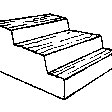
វិធានការរចនាស័ម្ពន្ធ
- S3: កម្ពស់ភ្លឺ ប្រឡាយ ផ្លូវទឹក
- S5: ទំនប់ ថ្លុក ស្រះ
មតិយោបល់:
Main measures: structural measures
3.7 កំណត់ប្រភេទនៃការធ្លាក់ចុះគុណភាពដីសំខាន់ៗដែលបច្ចេកទេសនេះបានដោះស្រាយ

ការធ្លាក់ចុះជីវសាស្ត្រនៃដី
- Bq: ការថយចុះនូវជីវម៉ាស/ បរិមាណ
- Bs: សមាសភាពដែលមានគុណភាពនិងប្រភេទសត្វ/ការថយចុះនូវជីវចម្រុះ
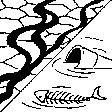
ការបាត់បង់ទឹក
- Ha: ការថយចុះសំណើមដី
- Hs: ការប្រែប្រួលបរិមាណទឹកនៅលើផ្ទៃដី
- Hg: ការប្រែប្រួលបរិមាណទឹកនៅក្រោមដី
មតិយោបល់:
Main type of degradation addressed: Hs: change in quantity of surface water
Secondary types of degradation addressed: Bq: quantity / biomass decline, Bs: quality and species composition /diversity decline, Ha: aridification, Hg: change in groundwater / aquifer level
Main causes of degradation: Heavy / extreme rainfall (intensity/amounts), droughts
3.8 ការពារ កាត់បន្ថយ ឬស្តារឡើងវិញនៃការធ្លាក់ចុះគុណភាពដី
បញ្ជាក់ពីគោលដៅរបស់បច្ចេកទេស ដែលផ្តោតទៅការធ្លាក់ចុះគុណភាពដី:
- ការការពារការធ្លាក់ចុះគុណភាពដី
- ការកាត់បន្ថយការធ្លាក់ចុះគុណភាពដី
4. បច្ចេកទេសជាក់លាក់ សកម្មភាពអនុវត្ត ធាតុចូល និងថ្លៃដើម
4.1 គំនូសបច្ចេកទេសនៃបច្ចេកទេសនេះ
4.2 លក្ខណៈពិសេសនៃបច្ចេកទេស/ ពណ៌នាពីគំនូរបច្ចេកទេស
Cross-section of sand dam
Technical knowledge required for field staff / advisors: moderate (The technical skills required to site, design and supervise construction. These skills have and can be developed locally.)
Technical knowledge required for land users: low (Knowledge of local rivers and their flood levels essential. Basic knowledge of stone masonry useful)
Main technical functions: control of concentrated runoff: retain / trap, water harvesting / increase water supply, improvement of water quality, buffering / filtering water
Secondary technical functions: increase of groundwater level / recharge of groundwater, sediment retention / trapping, sediment harvesting, increase of biomass (quantity), promotion of vegetation species and varieties (quality, eg palatable fodder)
Dam/ pan/ pond
Depth of ditches/pits/dams (m): 1-5
Width of ditches/pits/dams (m): 1-2
Length of ditches/pits/dams (m): 5-50
Specification of dams/ pans/ ponds: Capacity 5,000m3
Catchment area: 300 km2m2
4.3 ព័ត៌មានទូទៅដែលពាក់ព័ន្ធនឹងការគណនាធាតុចូល និងថ្លៃដើម
ផ្សេងៗ/ រូបិយប័ណ្ណជាតិ (បញ្ជាក់):
Kenyan Shilling
កំណត់អត្រាប្តូរប្រាក់ពីដុល្លាទៅរូបិយប័ណ្ណតំបន់ (បើទាក់ទង)៖ 1 ដុល្លារ =:
83,0
កំណត់ថ្លៃឈ្នួលជាមធ្យមនៃការជួលកម្លាំងពលកម្មក្នុងមួយថ្ងៃ:
2.50
4.4 សកម្មភាពបង្កើត
| សកម្មភាព | ប្រភេទវិធានការ | ពេលវេលា | |
|---|---|---|---|
| 1. | Collection of rock, sand and water | រចនាសម្ព័ន្ធ | 1-3 months before construction |
| 2. | Construct dam | រចនាសម្ព័ន្ធ | During dry season |
| 3. | Cure dam | រចនាសម្ព័ន្ធ | For 4 weeks after construction |
| 4. | Terracing and protection of immediate catchment | រចនាសម្ព័ន្ធ | 1-3 months before construction |
4.5 ថ្លៃដើម និងធាតុចូលដែលត្រូវការសម្រាប់ការបង្កើតបច្ចេកទេស
| បញ្ជាក់ពីធាតុចូល | ឯកតា | បរិមាណ | ថ្លៃដើមក្នុងមួយឯកតា | ថ្លៃធាតុចូលសរុប | % នៃថ្លៃដើមដែលចំណាយដោយអ្នកប្រើប្រាស់ដី | |
|---|---|---|---|---|---|---|
| កម្លាំងពលកម្ម | Collection of rock, sand and water | Persons/day | 220,0 | 2,5 | 550,0 | 100,0 |
| កម្លាំងពលកម្ម | Terracing and protection of immediate catchment | Persons/day | 100,0 | 2,5 | 250,0 | 100,0 |
| កម្លាំងពលកម្ម | Construct dam | Persons/day | 500,0 | 2,5 | 1250,0 | 90,0 |
| កម្លាំងពលកម្ម | Cure dam | Persons/day | 50,0 | 2,5 | 125,0 | 100,0 |
| សម្ភារៈ | Tools | per dam | 1,0 | 300,0 | 300,0 | |
| សម្ភារៈសាងសង់ | Cement (bag = 50kg) | bags | 500,0 | 9,15 | 4575,0 | |
| សម្ភារៈសាងសង់ | Steel (12m x Y20 steel bar) | pieces | 7,0 | 45,7 | 319,9 | |
| សម្ភារៈសាងសង់ | Steel | per dam | 1,0 | 1000,0 | 1000,0 | |
| ផ្សេងៗ | Skilled labour | per dam | 1,0 | 3000,0 | 3000,0 | |
| ថ្លៃដើមសរុបក្នុងការបង្កើតបច្ចេកទេស | 11369,9 | |||||
មតិយោបល់:
Duration of establishment phase: 6 month(s)
4.6 សកម្មភាពថែទាំ
| សកម្មភាព | ប្រភេទវិធានការ | ពេលវេលា/ ភាពញឹកញាប់ | |
|---|---|---|---|
| 1. | Inspect and if necessary extend spillway or repair erosion around dam | រចនាសម្ព័ន្ធ | As required / annually |
| 2. | Maintain hand pump if fitted | រចនាសម្ព័ន្ធ | As required / annually |
4.7 កំណត់ថ្លៃដើមសម្រាប់ការថែទាំ/ សកម្មភាពរបស់បច្ចេកទេស (ក្នុងរយៈពេលមួយឆ្នាំ)
មតិយោបល់:
In 2012, in Machakos County, Kenya, the cost of materials and technical support for a dam using 250 bags of cement is USD 7,000 and USD 11,700 for a 500 bag dam. The costs in 2.6.1 are based on a 500 bag dam. The volume of a 500 bag dam is approx 140m3 of stone masonry of which 40% is mortar (sand and cement) and 60% is rock. Such a dam will typically be appropriate on rivers 30m wide and with a spillway 3 metres above the bedrock in the river bed level. Costs rise by up to 50% in more remote regions or countries. Sand dams require a lot of hard work. Community members collect the required stones, sand and water, support construction and terrace the land around the dam. If this in-kind contribution is included the costs would rise by 100%. In Kenya, with a long tradition of building sand dams, it takes from 6 to 12 weeks to plan and prepare for construction and 2 days to 2 weeks to build the dam. In other areas, with less experience and/or less community commitment, building a dam may take 6 months or more.
4.8 កត្តាសំខាន់បំផុតដែលមានឥទ្ធិពលដល់ការចំណាយ
ពណ៌នាពីកត្តាប៉ះពាល់ចម្បងៗទៅលើថ្លៃដើម:
Each dam is individually designed. The size, design and cost of a dam varies considerably with the size of the river and to a lesser extent, location and transport costs. Sand dams are the world’s lowest cost method of capturing rainwater in dry rural areas by a factor of 3 to 30 times compared to rain water harvesting tanks, earth dams, haffirs and rock catchments.
5. លក្ខណៈបរិស្ថានធម្មជាតិ និងមនុស្ស
5.1 អាកាសធាតុ
បរិមាណទឹកភ្លៀងប្រចាំឆ្នាំ
- < 250 មម
- 251-500 មម
- 501-750 មម
- 751-1,000 មម
- 1,001-1,500 មម
- 1,501-2,000 មម
- 2,001-3,000 មម
- 3,001-4,000 មម
- > 4,000 មម
លក្ខណៈពិសេស/ មតិយោបល់លើរដូវភ្លៀង:
Sand dams suit dryland climate: dry sub-humid, semi-arid and arid climates
តំបន់កសិអាកាសធាតុ
- មានភ្លៀងតិចតួច
Thermal climate class: subtropics
5.2 សណ្ឋានដី
ជម្រាលជាមធ្យម:
- រាបស្មើ (0-2%)
- ជម្រាលតិចតួច (3-5%)
- មធ្យម (6-10%)
- ជម្រាលខ្ពស់បន្តិច (11-15%)
- ទីទួល (16-30%)
- ទីទួលចោត (31-60%)
- ទីទួលចោតខ្លាំង (>60%)
ទម្រង់ដី:
- ខ្ពង់រាប
- កំពូលភ្នំ
- ជម្រាលភ្នំ
- ជម្រាលទួល
- ជម្រាលជើងភ្នំ
- បាតជ្រលងភ្នំ
តំបន់តាមរយៈកម្ពស់ :
- 0-100 ម
- 101-500 ម
- 501-1,000 ម
- 1,001-1,500 ម
- 1,501-2,000 ម
- 2,001-2,500 ម
- 2,501-3,000 ម
- 3,001-4,000 ម
- > 4,000 ម
មតិយោបល់ និងបញ្ចាក់បន្ថែមអំពីសណ្ឋានដី :
Land forms: Sand dams only suit seasonal rivers with sufficient sandy sediment and an accessible bedrock
Altitudinal zone: Also 1,001-1,500 m a.s.l.
Slopes on average: Also moderate
5.3 ដី
បើអាចសូមភ្ជាប់ការពណ៌នាពីដីឱ្យបានច្បាស់ ឬព័ត៌មានដែលអាចទទួលបាន ឧ. ប្រភេទដី, pH ដី/ ជាតិអាស៊ីត, សមត្ថភាពផ្លាស់ប្តូរកាចុង, វត្តមាននីត្រូសែន, ភាពប្រៃ ។ល។:
Soil water storage capacity: The aquifer behind the dam must consist of sandy sediments with a high porosity and drainable porosity
5.4 ទឹកដែលអាចទាញមកប្រើប្រាស់បាន និងគុណភាពទឹក
នីវ៉ូទឹកក្រោមដី:
5-50 ម
ទឹកលើដីដែលអាចទាញយកប្រើប្រាស់បាន:
លើស
គុណភាពទឹក (មិនបានធ្វើប្រត្តិកម្ម):
ទឹកពិសារដែលមានគុណភាពល្អ
មតិយោបល់ និងលក្ខណៈពិសេសផ្សេងៗទៀតលើគុណភាព និងបរិមាណទឹក :
Availability of surface water: Sand dams only suit seasonal rivers
Water quality (untreated): Good drinking water because the sand filters the water. Water abstracted through an infiltration gallery has a high bacterialogical quality but water is often used for small scale irrigation and livestock watering.
5.5 ជីវៈចម្រុះ
ភាពសម្បូរបែបនៃប្រភេទ:
- ខ្ពស់
មតិយោបល់ និងលក្ខណៈពិសេសផ្សេងទៀតលើជីវចម្រុះ:
Sand dams rejuvenate riverine ecologies and increase local biodiversity
5.6 លក្ខណៈនៃអ្នកប្រើប្រាស់ដីដែលអនុវត្តបច្ចេកទេស
ចំណូលក្រៅកសិកម្ម:
- តិចជាង 10% នៃចំណូល
កម្រិតជីវភាព:
- មិនល្អ
- មធ្យម
ឯកជន ឬក្រុម:
- ជាក្រុម/ សហគមន៍
យេនឌ័រ:
- ស្ត្រី
សូមបញ្ជាក់ពីលក្ខណៈពាក់ព័ន្ធផ្សេងទៀតអំពីអ្នកប្រើប្រាស់ដី:
Land users applying the Technology are mainly common / average land users
Difference in the involvement of women and men: The dams are built by members of registered self-help groups, typically 50 members / group and two-thirds women. The primary concerns of these groups tend to be food and water. Sand dams provide for people, livestock and crops. Water collection and farming are primarily undertaken by women in Kikamba culture and hence women have the greatest vested interest to imrpove food and water availability. Many men migrate away from the area in search of work.
Population density: 50-100 persons/km2
Annual population growth: 2% - 3%
Off-farm income specification: This varies considerably, but most self-help group members are subsistence farmers
5.7 ទំហំផ្ទៃដីជាមធ្យមនៃដីផ្ទាល់ខ្លួន ឬជួលគេដែលបានអនុវត្តបច្ចេកទេស
- < 0.5 ហិកតា
- 0.5-1 ហិកតា
- 1-2 ហិកតា
- 2-5 ហិកតា
- 5-15 ហិកតា
- 15-50 ហិកតា
- 50-100 ហិកតា
- 100-500 ហិកតា
- 500-1,000 ហិកតា
- 1,000-10,000 ហិកតា
- > 10,000 ហិកតា
តើផ្ទៃដីនេះចាត់ទុកជាទំហំកម្រិតណាដែរ ខ្នាតតូច មធ្យម ឬខ្នាតធំ (ធៀបនឹងបរិបទតំបន់)?
- ខ្នាតតូច
5.8 ភាពជាម្ចាស់ដី កម្មសិទ្ធប្រើប្រាស់ដី និងកម្មសិទ្ធប្រើប្រាស់ទឹក
ភាពជាម្ចាស់ដី:
- រដ្ឋ
កម្មសិទ្ធិប្រើប្រាស់ដី:
- ជាក្រុម (មានដែនកំណត់)
កម្មសិទ្ធប្រើប្រាស់ទឹក:
- ជាក្រុម (មានដែនកំណត់)
មតិយោបល់:
Legal agreements for construction and access between the self-help group and the owners of land adjacent to the dam and registering the dam and its associated water rights by the self-help group with the Kenyan Water Resources Management Authority (WRMA) is vital to safeguarding water rights, controlling water and sand abstraction, formalising the authority of the self-help group to levy water tarriffs if appropriate and ensuring there is open access to all to water from scoop holes.
5.9 ការប្រើប្រាស់សេវាកម្ម និងហេដ្ឋារចនាសម្ព័ន្ធ
សុខភាព:
- មិនល្អ
- មធ្យម
- ល្អ
ការអប់រំ:
- មិនល្អ
- មធ្យម
- ល្អ
ជំនួយបច្ចេកទេស:
- មិនល្អ
- មធ្យម
- ល្អ
ការងារ (ឧ. ការងារក្រៅកសិដ្ឋាន):
- មិនល្អ
- មធ្យម
- ល្អ
ទីផ្សារ:
- មិនល្អ
- មធ្យម
- ល្អ
ថាមពល:
- មិនល្អ
- មធ្យម
- ល្អ
ផ្លូវ និងការដឹកជញ្ជូន:
- មិនល្អ
- មធ្យម
- ល្អ
ទឹកផឹក និងអនាម័យ:
- មិនល្អ
- មធ្យម
- ល្អ
សេវាកម្មហិរញ្ញវត្ថុ:
- មិនល្អ
- មធ្យម
- ល្អ
6. ផលប៉ះពាល់ និងការសន្និដ្ឋាន
6.1 ផលប៉ះពាល់ក្នុងបរិវេណអនុវត្តបច្ចេកទេសដែលកើតមាន
ផលប៉ះពាល់លើសេដ្ឋកិច្ចសង្គម
ផលិតផល
ផលិតកម្មដំណាំ
ផលិតកម្មចំណីសត្វ
គុណភាពចំណីសត្វ
ផលិតកម្មសត្វ
ផលិតកម្មឈើ
ហានិភ័យនៃភាពបរាជ័យរបស់ផលិតកម្ម
ភាពសម្បូរបែបនៃផលិតផល
ការបង្កើតថាមពល
មតិយោបល់/ ការបញ្ជាក់:
Tree planting enabled by dams increases fuel wood availability
ទឹកដែលអាចទាញមកប្រើប្រាស់បាន និងគុណភាពទឹក
ទឹកបរិភោគដែលអាចទាញយកមកប្រើប្រាស់បាន
ទឹកដែលអាចប្រើប្រាស់បានសម្រាប់ការចិញ្ចឹមសត្វ
គុណភាពទឹកសម្រាប់ការចិញ្ចឹមសត្វ
ទឹកប្រើប្រាស់សម្រាប់ស្រោចស្រព
គុណភាពទឹកស្រោចស្រព
ចំណូល និងថ្លៃដើម
ចំណូលក្នុងកសិដ្ឋាន
ភាពសម្បូរបែបប្រភពប្រាក់ចំណូល
បន្ទុកការងារ
មតិយោបល់/ ការបញ្ជាក់:
Construction of sand dams is labour intensive. This is more than offset by the time savings created by reducing the time required to collect water.
ផលប៉ះពាល់ទៅលើសេដ្ឋកិច្ចសង្គមផ្សេងៗ
School attendance
ផលប៉ះពាល់ទៅលើវប្បធម៌សង្គម
សន្តិសុខស្បៀង/ ភាពគ្រប់គ្រាន់ខ្លួនឯង
មតិយោបល់/ ការបញ្ជាក់:
Sand dams are integrated within a wider programme that promotes food security and self sufficiency
ស្ថានភាពសុខភាព
មតិយោបល់/ ការបញ្ជាក់:
Reduced water borne disease. Increased access to higher quality water and improved food security improves health.
ឱកាសវប្បធម៍
មតិយោបល់/ ការបញ្ជាក់:
Working through and strengthening self help groups builds on the local tradition of self-help called mwethya
ស្ថាប័នសហគមន៍
មតិយោបល់/ ការបញ្ជាក់:
Increases the capacity of self-help groups
ចំណេះដឹង SLM / ការធ្លាក់ចុះគុណភាពដី
មតិយោបល់/ ការបញ្ជាក់:
Learning exchanges between self-help groups and demonstration plots builds knowledge and adoption of conservation farming
ការកាត់បន្ថយជម្លោះ
មតិយោបល់/ ការបញ្ជាក់:
If ownership and management of dam is not clear and legally protected this can result in conflict
Fuel security
មតិយោបល់/ ការបញ្ជាក់:
Tree nursersies and agro-forestry enabled by sand dams improves access to fuel food
Livelihood and human well-being
មតិយោបល់/ ការបញ្ជាក់:
Sand dams save farmers hours every day that they can invest in improving their farms to grow more food and create the potential for farmers to irrigate trees and crops, water livestock and generate an income. It is strongly advised that sand ams are integrated within a wider land management and livelihoods programme in order to realise these opportunities to the maximum. Community ownership and management is critical to achieving this
Livestock health
មតិយោបល់/ ការបញ្ជាក់:
Sand dams provide secure water source for livestock
Income
មតិយោបល់/ ការបញ្ជាក់:
Irrigated horticulture and tree nurseries improves farmer incomes
ផលប៉ះពាល់ទៅលើអេកូឡូស៊ី
វដ្តទឹក/លំហូរ
បរិមាណទឹក
គុណភាពមុន SLM:
<1000m3
គុណភាពក្រោយ SLM:
2-10,000m3
គុណភាពទឹក
មតិយោបល់/ ការបញ្ជាក់:
Sand filters the water
ការប្រមូលស្តុកទុកទឹក
មតិយោបល់/ ការបញ្ជាក់:
Sand dams capture excess flood flows
លំហូរទឹកលើផ្ទៃដី
មតិយោបល់/ ការបញ្ជាក់:
Terracing the immediate dam catchment reduces surface runoff
នីវ៉ូទឹកក្រោមដី/ ដង្ហើមទឹក
មតិយោបល់/ ការបញ្ជាក់:
Studies of Kitui dams found watertable increased by several metres
រំហួត
មតិយោបល់/ ការបញ្ជាក់:
Once the water level in the dam aquifer is below 60cm, evaporation losses from the sand are negligible
ដី
សំណើមដី
មតិយោបល់/ ការបញ្ជាក់:
Sand dams recharge the aquifer and raises the watertable above and below the dam
ភាពប្រៃ
មតិយោបល់/ ការបញ្ជាក់:
Salinity of sand dam water is often less than surrounding groundwater
ជីវចម្រុះ៖ ដំណាំ, សត្វ
ភាពសម្បូរបែបនៃរុក្ខជាតិ
មតិយោបល់/ ការបញ្ជាក់:
Rejuvenation of riverine ecologies and planting indigenous trees increases diversity
ភាពសម្បូរបែបនៃទីជំរក
មតិយោបល់/ ការបញ្ជាក់:
Riverine ecologies rejuvenated
ការកាត់បន្ថយហានិភ័យនៃគ្រោះមហន្តរាយ និងគ្រោះអាកាសធាតុ
ផលប៉ះពាល់នៃទឹកជំនន់
មតិយោបល់/ ការបញ្ជាក់:
By creating a buffer, flooding downstream of a dam or series of dams is reduced
ការបំភាយនៃកាបូន និងឧស្ម័នផ្ទះកញ្ចក់
មតិយោបល់/ ការបញ្ជាក់:
Tree nursersies enabled by sand dams capture store carbon and reduce deforestation
6.2 ផលប៉ះពាល់ក្រៅបរិវេណអនុវត្តបច្ចេកទេសដែលកើតមាន
ទឹកដែលអាចទាញមកប្រើប្រាស់បាន
ទឹកជំនន់ខ្សែទឹកខាងក្រោម
Buffering/សមត្ថភាពចម្រោះ
ខូចខាតដល់ស្រែអ្នកជិតខាង
ខូចខាតដល់ហេដ្ឋារចនាសម្ព័ន្ធសាធារណៈ/ឯកជន
6.3 ភាពប្រឈម និងភាពរួសនៃបច្ចេកទេសទៅនឹងការប្រែប្រួលអាកាសធាតុ និងគ្រោះអាកាសធាតុ/ គ្រោះមហន្តរាយ (ដែលដឹងដោយអ្នកប្រើប្រាស់ដី)
ការប្រែប្រួលអាកាសធាតុ
ការប្រែប្រួលអាកាសធាតុ
| រដូវកាល | ប្រភេទនៃការប្រែប្រួលអាកាសធាតុ/ព្រឹត្តិការណ៍ | លក្ខណៈឆ្លើយតបនៃបច្ចេកទេសទៅនឹងការប្រែប្រួលអាកាសធាតុ | |
|---|---|---|---|
| សីតុណ្ហភាពប្រចាំឆ្នាំ | កើនឡើង | ល្អ |
គ្រោះអាកាសធាតុ (មហន្តរាយ)
គ្រោះមហន្តរាយធម្មជាតិ
| លក្ខណៈឆ្លើយតបនៃបច្ចេកទេសទៅនឹងការប្រែប្រួលអាកាសធាតុ | |
|---|---|
| ព្យុះភ្លៀងតាមតំបន់ | ល្អ |
| ព្យុះកំបុតត្បូងតាមតំបន់ | ល្អ |
គ្រោះមហន្តរាយអាកាសធាតុ
| លក្ខណៈឆ្លើយតបនៃបច្ចេកទេសទៅនឹងការប្រែប្រួលអាកាសធាតុ | |
|---|---|
| រាំងស្ងួត | ល្អ |
គ្រោះមហន្តរាយទឹក
| លក្ខណៈឆ្លើយតបនៃបច្ចេកទេសទៅនឹងការប្រែប្រួលអាកាសធាតុ | |
|---|---|
| ទឹកជំនន់ទូទៅ (ទន្លេ) | ល្អ |
ផលវិបាកដែលទាក់ទងនឹងបរិយាកាសផ្សេងៗទៀត
ផលវិបាកដែលទាក់ទងនឹងបរិយាកាសផ្សេងៗទៀត
| លក្ខណៈឆ្លើយតបនៃបច្ចេកទេសទៅនឹងការប្រែប្រួលអាកាសធាតុ | |
|---|---|
| កាត់បន្ថយពេលដាំដុះ | ល្អ |
មតិយោបល់:
The capacity of the spillway would be increased to control peak flood events
6.4 ការវិភាគថ្លៃដើម និងអត្ថប្រយោជន៍
តើផលចំណេញ និងថ្លៃដើមត្រូវបានប្រៀបធៀបគ្នាយ៉ាងដូចម្តេច (ទស្សនៈរបស់អ្នកប្រើប្រាស់ដី)?
រយៈពេលខ្លី:
វិជ្ជមាន
រយៈពេលវែង:
វិជ្ជមានខ្លាំង
តើផលចំណេញ និងការថែទាំ/ ជួសជុលត្រូវបានប្រៀបធៀបគ្នាយ៉ាងដូចម្តេច (ទស្សនៈរបស់អ្នកប្រើប្រាស់ដី)?
រយៈពេលខ្លី:
វិជ្ជមានខ្លាំង
រយៈពេលវែង:
វិជ្ជមានខ្លាំង
មតិយោបល់:
The very low cost of operating and maintaining sand dams means they are well suited to remote, poorly served regions. Because it is a low cost technology that requires a major community contribution and the knowledge and skills of locally trained artisans, it’s a solution particularly suited to community ownership and self-supply. This contributes to effective implementation.
6.5 ការទទួលយកបច្ចេកទេស
ក្នុងចំណោមគ្រួសារទាំងអស់ដែលអនុវត្តបច្ចេកទេស តើមានប៉ុន្មានគ្រួសារដែលចង់ធ្វើដោយខ្លួនឯង ដោយមិនទទួលបានសម្ភារៈលើកទឹកចិត្ត/ប្រាក់ឧបត្ថម្ភ?:
- 0-10%
មតិយោបល់:
100% of land user families have adopted the Technology with external material support
Comments on acceptance with external material support: Sand dams require external material support including technical advice to correctly site, design and construct
There is a little trend towards spontaneous adoption of the Technology
Comments on adoption trend: There is some evidence of spontaneous adoption amongst development agencies working in regions suited to sand dams.
6.7 ភាពខ្លាំង/ គុណសម្បត្តិ/ ឱកាសនៃបច្ចេកទេស
| ភាពខ្លាំង/ គុណសម្បត្តិ/ ឱកាសនៅកន្លែងរបស់អ្នកប្រើប្រាស់ដី |
|---|
| “I will be able to rent a plot of land near to the sand dam and grow vegetables (tomatoes, peppers, and French beans). My animals will also be healthy because they will always be able to drink here, even during the droughts.” Mauwa Maingi, self-help group member, aged 87, 2010 |
|
Mbatha Mbuli, 83. "My family collects water from a near-by well, about ½ Km away, but the water is very salty. It takes one hour to collect water, and needs 6 trips to fetch enough to last the day. There is a pipeline nearby but we must pay 2 shillings per 20 litres. I planted 9 different crops last year, but only 2 survived. I wanted to work with Excellent on this project because I had heard that the projects you support help communities like us to build sand dams, grow trees and create seed banks. I would like to grow trees like Neem in the future and a sand dam here will really help with that. Excellent shares in the interests of the community and they listen to the community and take direction from us" |
| Stephen Hussey, Dabane Trust, 2011 “Dabane has made its name by getting water out of sand rivers – Our next step is to ensure we don’t over abstract – the answer to that, especially upstream, is sand dams. Without a doubt.” |
| Milka Mutunga, Kilili Catchment SHG, Kenya 2009-10 "The distance that I used to travel in order to fetch water has been reduced..now I am able to plant more vegetables close to my home. I have learnt how to dig terraces which have helped in increasing the yields that I harvest from my farm..If this is not development then I do not know what development means" |
| Kimanthi Ngovi, Yikiuuku SHG “The sand dams have done an incredible work for us – water availability at a shorter distance has helped me in saving time for other activities. When water was a long way away I had to get time to collect water in one day and dig terraces on the other day. Today I can fetch water and dig terraces on the same day.” |
| ភាពខ្លាំង/ គុណសម្បត្តិ/ ឱកាស ទស្សនៈរបស់បុគ្គលសំខាន់ៗ |
|---|
|
Sand dams provide a safe, reliable, year round, local supply of water for people, crops and livestock in water scarce environments How can they be sustained / enhanced? The very low cost of operating and maintaining sand dams means they are well suited to remote, poorly served regions. Community ownership is critical to their effective management. |
|
Sand dams save farmers hours every day that they can invest in improving their farms to grow more food and create the potential for farmers to irrigate trees and crops, water livestock and generate an income How can they be sustained / enhanced? Don’t build a sand dam in isolation. An independent evaluation in 2010 of 2 sand dam programmes found the long term impacts on poverty, food security and incomes were greatest when sand dams were integrated within a wider community development programme aimed at improving food production, livestock management and land management practice. |
|
Because it is a low cost technology that requires a major community contribution and the knowledge and skills of locally trained artisans, it’s a solution particularly suited to community ownership and self-supply. This contributes to effective implementation. How can they be sustained / enhanced? Don’t short cut community ownership. Communities better understand and are able to implement solutions to their problems if they are central to the planning of the solution. Genuine community commitment and ownership from initial planning to on-going management is vital to realise the intended benefits and full potential created by a dam. Legal registration and agreements to safeguard community access and water rights help this. |
|
Sand dams provide significant environmental benefits such as aquifer recharge, increased downstream flows in the dry-season, rejuvenation of river ecologies and moderation of floods. As such, it contributes to eco-system services and climate change adaption. How can they be sustained / enhanced? Support terracing, tree planting and conservation farming in the wider catchment. This conserves soil and water on farms, increases aquifer recharge and base flows into the dam and reduces the amount of silt in the sand dam aquiver. Research and disseminate evidence of these benefits and the value of these eco-system services |
|
The technology is scaleable and has a broader application for use as a rural and game park road crossing to replace less effective culvert bridges. How can they be sustained / enhanced? In order to upscale this solution, there is a need for greater awareness and advocacy of the technology and its benefits amongst these groups. Nothing generates interest in sand dams more than exposure to successful examples |
6.8 ភាពខ្សោយ/ គុណវិបត្តិ/ ហានិភ័យនៃបច្ចេកទេស និងវិធីសាស្ត្រដោះស្រាយ
| ភាពខ្សោយ/ គុណវិបត្តិ/ ហានិភ័យ ទស្សនៈរបស់អ្នកចងក្រងឬបុគ្គលសំខាន់ៗ | តើបច្ចេកទេសទាំងនោះបានដោះស្រាយបញ្ហាដូចម្តេច? |
|---|---|
| Although sand dams are technically replicable, their application in new contexts requires careful understanding and consideration. | Excellent Development has developed a framework tool to help agencies identify the political, economic, social, technical, legal and environmental factors that should be taken account of when introducing sand dams to a new context. |
| Sand dams require the technical knowledge and skills of local artisans in order to correctly site, design and construct them | The technical barriers to adoption are low: The technical skills required have and can be developed locally. Learning exchanges between implementing organisations and developing technical manuals and resources aids this learning |
| This is a drylands solution. Sand dams can only be built on seasonal rivers with sufficient sandy sediment and where the bedrock or impermeable layer is accessible in the river bed. | Increase awareness of the criteria that determine the technical suitability of a site. Use simple field tests, such as sediment seiving and probing, to assess potential sites and to map the potenial application of sand dams. |
7. ឯកសារយោង និងវេបសាយ
7.2 ឯកសារយោងដែលបានចេញផ្សាយ
ចំណងជើង អ្នកនិពន្ធ ឆ្នាំ ISBN:
Be buffered website including Managing the Water Buffer for Development and Climate Change Adaptation. Groundwater recharge, retention, reuse and rainwater storage. Steenbergen F. van and A. Tuinhof. (2009) which includes sand dams
មានប្រភពមកពីណា? ថ្លៃដើមប៉ុន្មាន?
www.bebuffered.com/3rbook
ការតភ្ជាប់ និងម៉ូឌុល
ពង្រីកមើលទាំងអស់ បង្រួមទាំងអស់ការតភ្ជាប់
គ្មានការតភ្ជាប់
ម៉ូឌុល
គ្មានម៉ូឌុល


